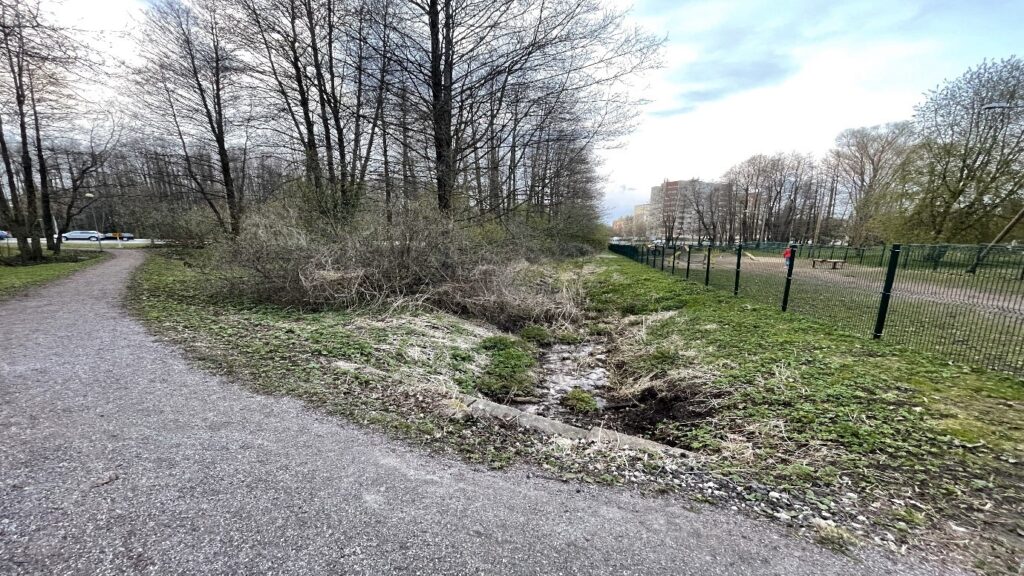Pilot Site in Spotlight: Tallinn’s Retrofitting of an Urban Stream with Real-Time Controlled Nature-Based Solution
Estonia’s capital Tallinn’s MUSTBE stormwater management solution will be built in a densely built and heavily trafficked area. The two main reasons for building the nature-based stormwater treatment solution are flood control and water purification.

The MUSTBE nature-based solution (later in the text: NBS) that will be built in Tallinn’s Tondimõisa park, Estonia, will be the first one of its kind in the country. The reason is its versatility.
– Estonia has not yet established a stormwater retention system that includes all the following parts: automated operation of the facility and various stormwater treatment stages, starting with sand and oil traps, retention ponds, a filter field, and ditches, says Indrek Tamberg, MUSTBE Project Manager from Tallinn Environmental and Municipal Department.
The main objective of the NBS is to reduce rainwater flooding in the Tammsaare road area. Flooding in the area is mainly caused by short-term heavy rainfall, when the existing pipes can no longer accommodate the excess rainwater.
– To avoid such a situation, it is reasonable to find technical solutions to slow down the flow of rainwater through a retention system. Our project has selected the Tondimõisa park to build such a stormwater retention system, Tamberg explains.
Traffic-Related Pollution in Stormwater
In addition to the goal of establishing a retention system to prevent flooding in the pilot site area, the nature-based stormwater system will purify rainwater from pollutants. This will result in a reduction in the pollution load entering the Baltic Sea. These two aspects are also the main goals in the MUSTBE project: flood control and purification of urban stormwater.
The wet areas in the park will be turned into online controlled and regulated nature-based stormwater retention and treatment system. The pilot site’s stormwater catchment area is a densely built urban environment which includes rooftops, streets, and both industrial and commercial areas. It is also one of Tallinn’s highest traffic load areas which indicates higher pollution loads in stormwater.
The main water body for stormwater in the area is the river Mustjõgi, which flows into the Baltic Sea. As a rainwater catchment area, the Mustjõgi is assessed as satisfactory, while as a natural water body the Mustjõgi is assessed as polluted, and its ecological status is considered poor.
– Therefore, Tallinn keenly needs to demonstrate solutions to real-estate developers and urban planners that could be used for stormwater management in order to get permission to divert stormwater from the city’s districts to the sea, Tamberg says.
Educational Purposes
According to Tamberg, the Tallinn pilot case also has an educational purpose. Information boards about the MUSTBE project and the pilot site will be installed near the replacement of the natural rainwater system.
– Besides providing residents with more information about natural stormwater solutions, the project partners will be able to share professional knowledge with each other during the implementation phase of the project, Tamberg explains.
The innovation of the planned NBS in Tallinn lies in the implementation of an instant feedback system which regulates the outflow based on water quality parameters. It also provides stakeholders with real-time water quality data allowing proactive interference in case of sudden deterioration in the stormwater quality.
– This is a significant step forward from the current system, where manual sampling is carried out infrequently and at arbitrary intervals, Tamberg concludes.
Writers and editors: Krista Valkonen, Hanna Kajander and Meri-Maaria Salo

